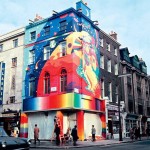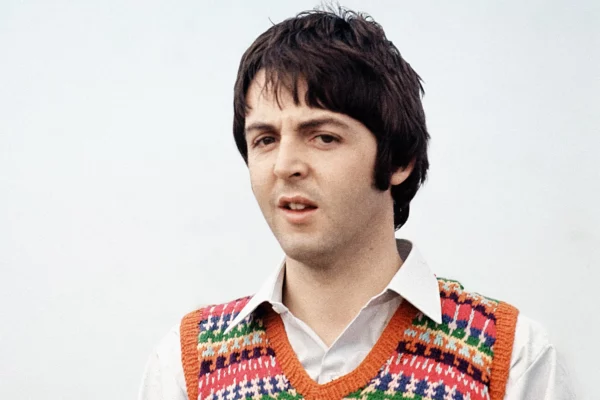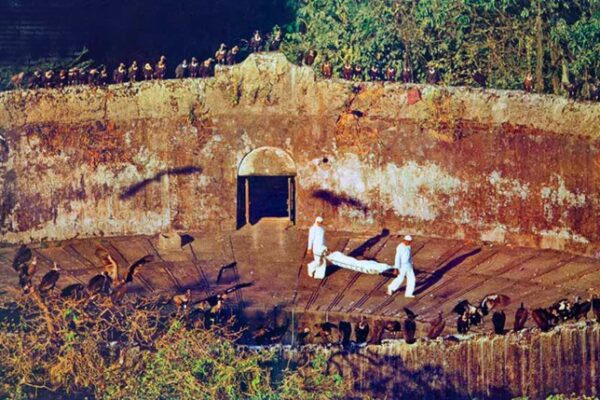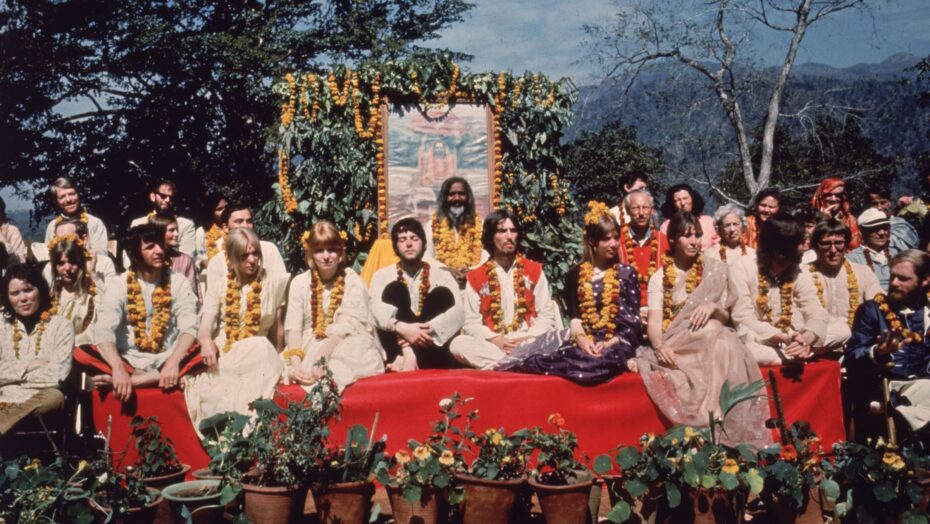
‘Roll up! Roll up! for the mystery tour’… a mystery indeed, given the chaos that subsequently engulfed The Beatles on their return from India to the West in 1968. Following the ground breaking success of Sgt Pepper’s Lonely Hearts Club Band, the Fab Four plus an entourage of no less than 60 people (including wives, girlfriends, Mia Farrow and Mike Love of the Beach Boys) made the pilgrimage to a 14 acre retreat in the foothills of the Himalayas at the invitation of a charismatic bearded yogi.
All started well and song-writing flourished for a month under the spiritual guidance of their newfound guru, Maharishi Mahesh, creator of Transcendental Meditation (TM). This was regarded by some as the Beatles most creative period, but the spiritual bonds were not strong enough to hold the group together.
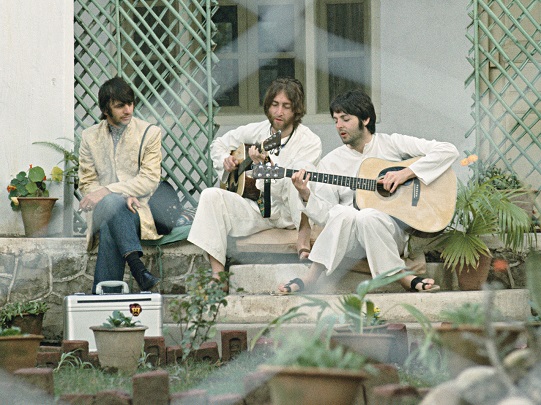
The ashram was not an historic spiritual place, rather a 1960s holiday camp for the wealthy elite, complete with western décor and its own helicopter pad. Ringo Starr lasted 10 days, Paul McCartney left for business reasons in March with John Lennon and George Harrison exited on April 12, 1968. Acrimony followed between the guests and their host, with accusations of financial exploitation and inappropriate sexual advances flying. Let’s now return to Rishikesh, the north Indian town on the Ganges often called “the yoga capital of the world” and find out how its faring decades later.

The ‘Beatles Ashram’, aka Transcendental Meditation Centre, was abandoned to ruin in the 1990s and it became a place of pilgrimage, the advancing jungle and crumbling arches adding to the mystery and encouraging now revered graffiti and informal art works. Part pilgrimage destination and part meditation centre, the site will forever be synonymous with the Beatles and their foray into India spirituality and the classic portal for Western engagement. The setting is quite magical; a hippie’s lost world above the picturesque village of Lakshman Jhula on rocky river banks below the tree-clad Himalayan foothills.
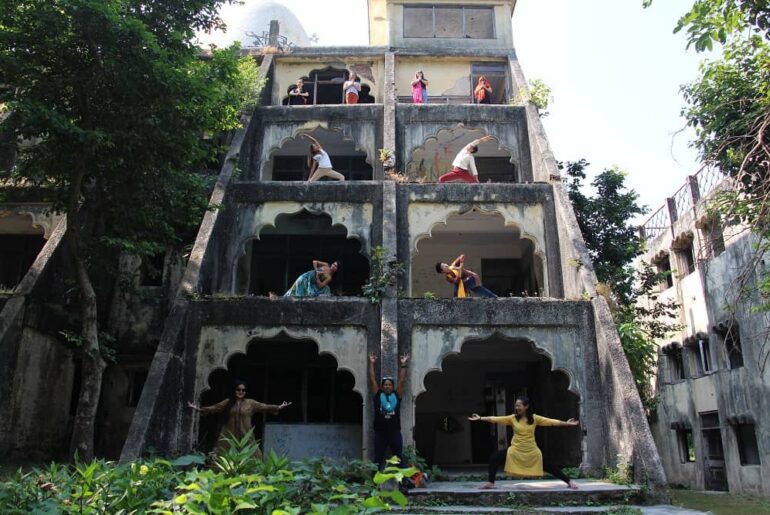
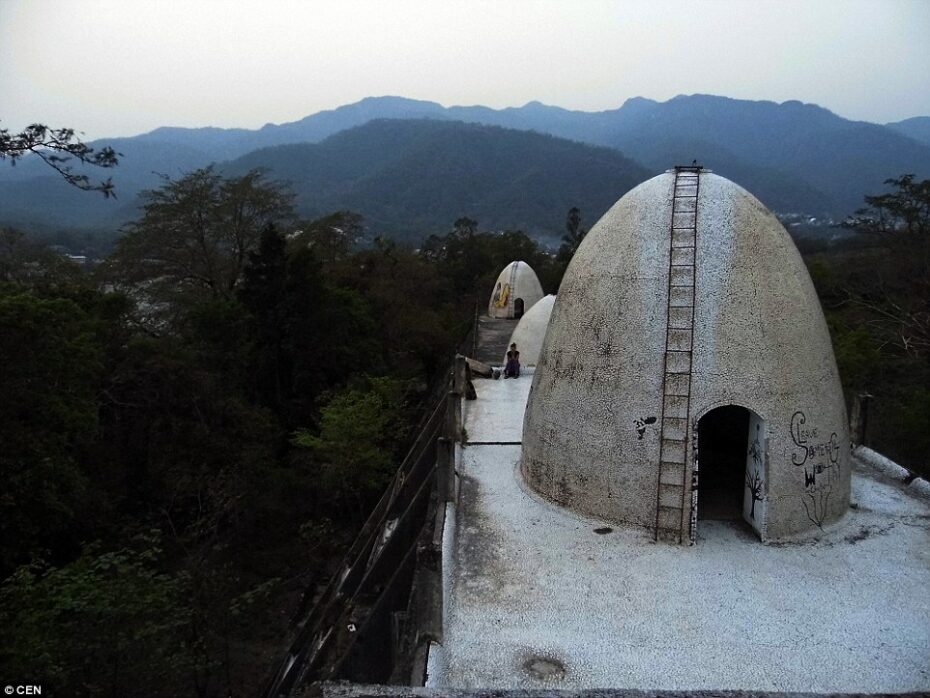
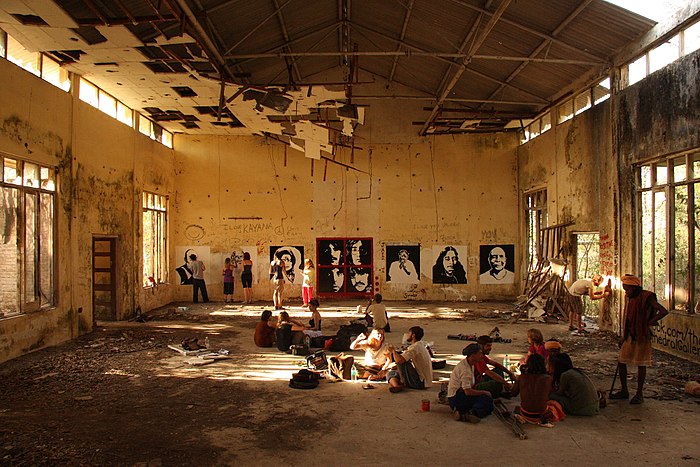
Despite the mud-slinging, the event had opened the new western world of the 1960s’ eyes to India and its vast and rich, tolerant spiritual heritage. After a period of steady decline following Maharishi Mahesh’s death in 1981, the now ‘holy’ site was reopened to the public in 2015, partially cleaned up and renamed the ‘Beatles Ashram’. There to be seen, are crumbling halls and hermitages, where the Beatles crafted such distinctive works as ‘I am the Walrus’, the inspirational rooftop retreat shells for the ‘Eggman’ still present.
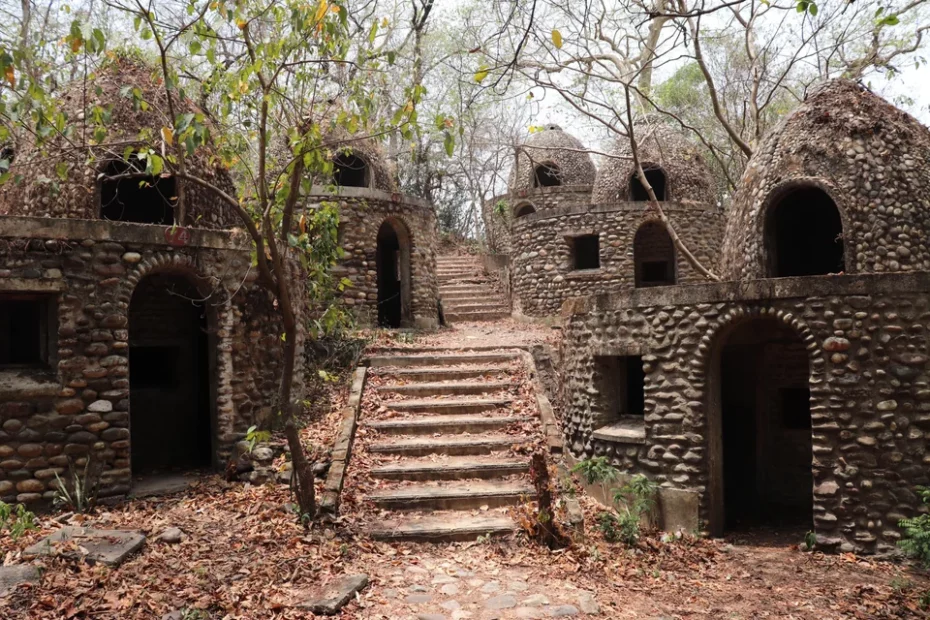
The beehive-shaped meditation caves can still be found on site, including the one where the Beatles are believed to have sought enlightenment, now covered in murals of their song lyrics and weathered by monsoon and encroaching jungle.
The closest comfort in town is the Last Chance Café, appropriately named to indicate that it is your last chance to grab a snack before immersing yourself in Beatles-fuelled meditative state. The café also has a charming garden and a cheap as chips guesthouse, but for something a little more cozy, you might consider staying at the Divine Ganga Cottage or the Haveli Hari Ganga, half an hour down river. There are also plenty of riverside lounges embodying the hippie spirit such as the Om Shanti Shanti café and the Ganga Beach Café. A Beatles museum is supposed to be in the works, but nothing yet has materialised.
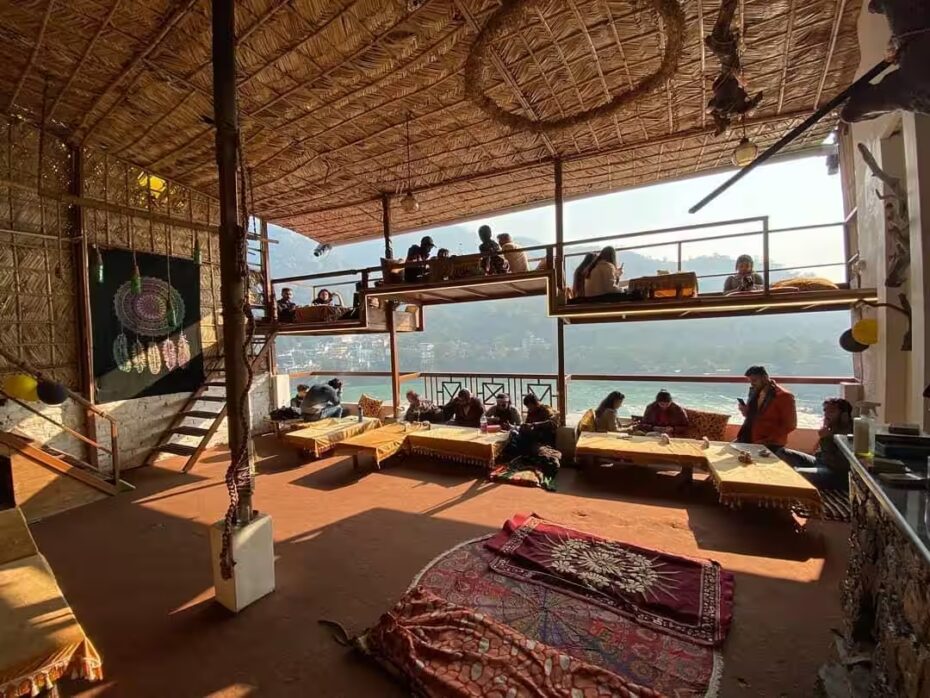
While the Beatles Ashram is no longer in welcoming yogi enthusiasts, there are some 30 ahsrams of various sizes in Rishikesh, including Jiva Yoga academy offering teacher training and Sivananda Ashram, founded in 1974, offering a full immersion into Yogic living complete with vegetarian meals and chanting monks. Parmarth Niketan Ashram is one of the larger facilities host to a international yoga facilities where travellers can receive blessings and witness daily Gangi Aarti light ceremonies on the river.
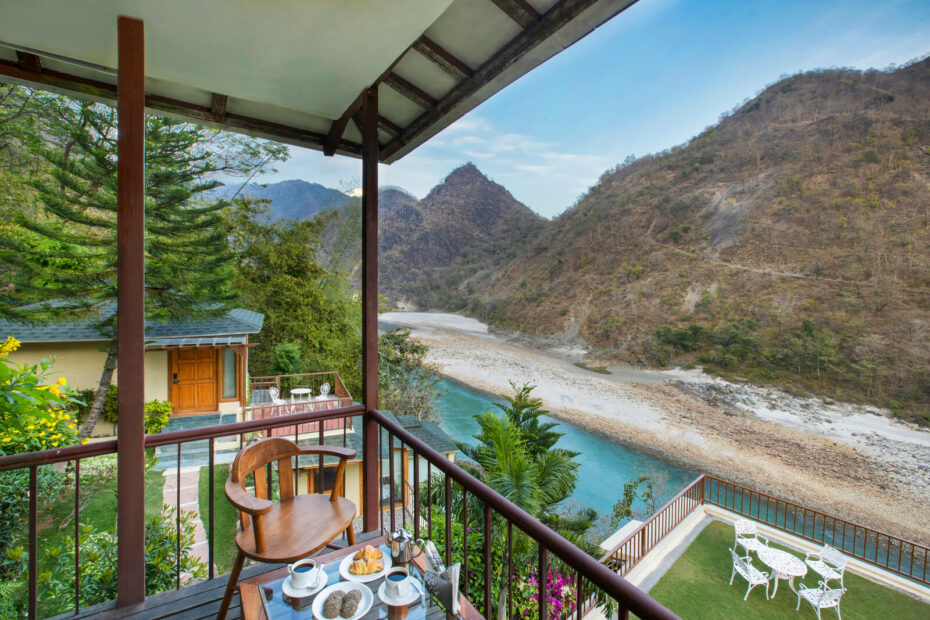
For a higher dose of luxury in the region, wander beyond the town into the lush forests of the Himalayan mountains to the luxury Raga on the Ganges retreat where you can find a sense of off-grid serenity the Beatles might have found on this river 60 years ago. Yoga and meditation is on the menu of course.
Transcendentalism, the concept that all religions seek love and tolerance and therefore must equally love each other, had been known to West since the 19th century, millennia older in the East. India historically had three ancient mainstream religions: Jainism, Buddhism and Hinduism. Jainism identifies with open-mindedness and avoidance of spiritual and material possession, Buddhism with the development of the self and Hinduism is an all-accepting, authority-free religion of no edicts or rule books. These ancient Indian religions offered a regulation and material-free approach to the world, which has become so attractive to many in West. Taken together with the monumental magnificence of the Mogul and Hindu architecture, the vast subcontinent with its rainbow of languages and mystic kingdoms, India continues to offer that intense and intoxicating experience.
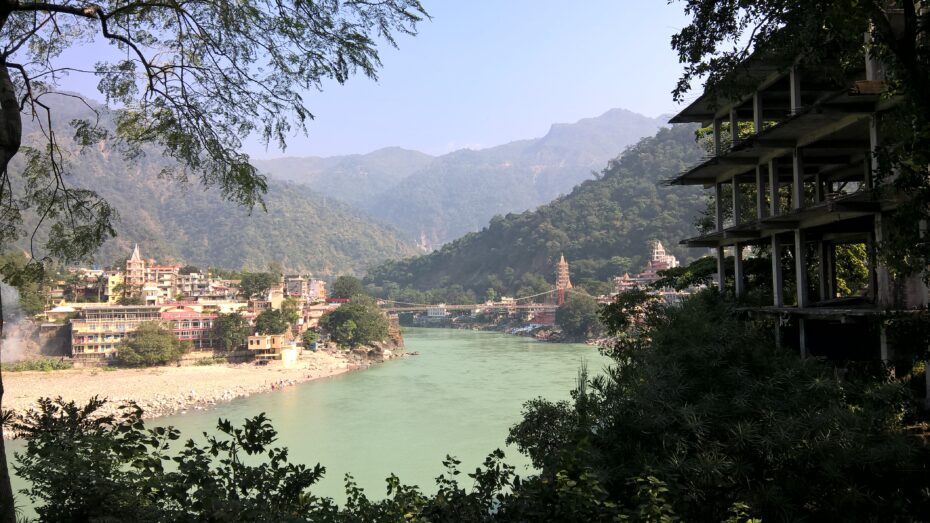
In 1968, on their return from India, The Beatles released ‘Yellow Submarine’. Hailed as ground-breaking, this movie delivered a vibrantly colourful animated spiritual world to the West. In hindsight, a mere whimper compared to the glittering esoteric polychromatic frenzies of the southern Hindu temples … the Beatles had indeed released the genie.




